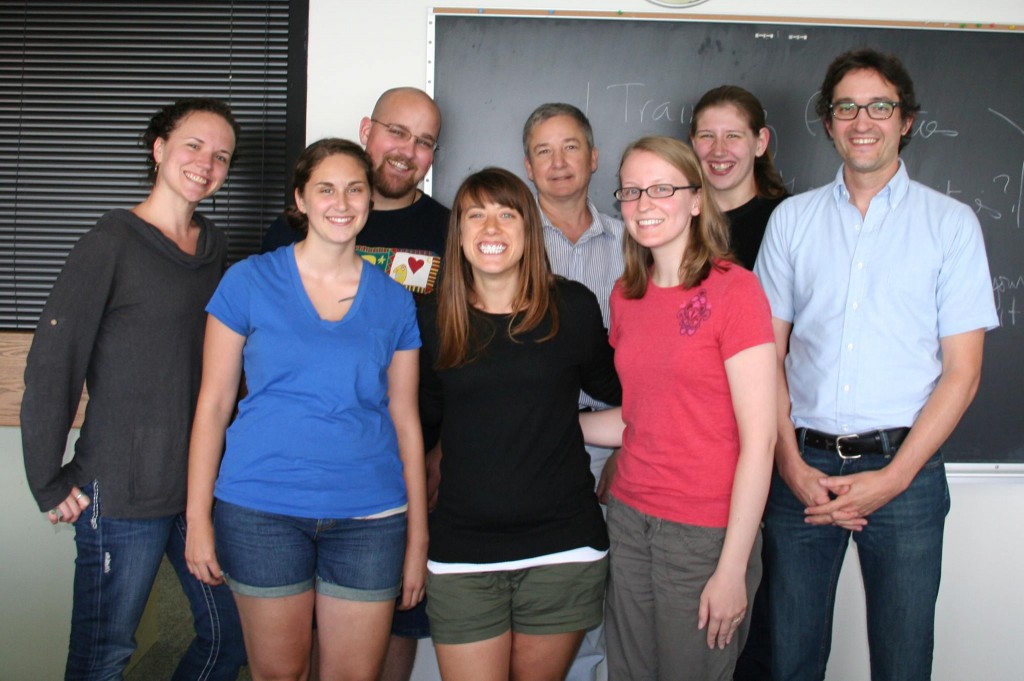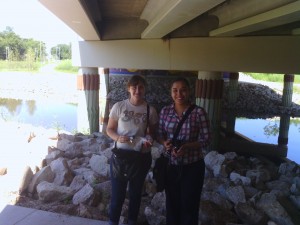
Robin and I have the last posts about the TLAM Practicum and I am left attempting to answer this question: How do I sum up this incredible 5 week experience? Between our in-class discussion and on-site work, six TLAM students were intellectually challenged, developed practical applicable skills,lived in tribal communities, and learned from Culture Keepers. In an effort to keep this SS and HTB (short, sweet, and hard to beat!), I think it would be best to list the 4 Reasons this Class was Vital to My Library School Education.
1. “For the things we have to learn before we can do them, we learn by doing them.” ― Aristotle
Working on-site at the Oneida Nation Museum, I garnered real practical experience with important archival collection software (PastPerfect), digitized photographs, and learned about archival description. Gathering practical experience is an important component of a thorough archival education.
Through discussion of adult learning readings, this course reinforced that learning is experiential and through experience and practice, we learn better.[1] Reflecting on this course, I am reminded that practice is relevant in library and information science education. Because, afterall, Practice doesn’t make perfect. Through practice, we reduce our imperfections.
2. “. . . In diversity there is beauty and there is strength.”―Maya Angelou
Library and Information Science (LIS) professionals serve every member in their community and have a responsibility to provide equitable service to every community member. This isn’t new knowledge. However, there are very few opportunities to complete service learning projects in diverse communities for archival students.
The likelihood that any information professional who graduates from the School of Library and Information Studies (SLIS) at the University of Wisconsin-Madison will work with and learn from their diverse patrons is high.
The TLAM practicum provided archival students with the opportunity to learn how archivists and museum curators serve their entire community and provided archival students with an opportunity to learn from Culture Keepers in a diverse, tribal community.
3. “A friend is one that knows you as you are, understands where you have been, accepts what you have become, and still, gently allows you to grow.”―William Shakespeare

This course facilitated the development of learning-based relationships with my fellow TLAM-Practicum students and with the staff at the Oneida Nation Museum. This course exemplified how students are teachers inside and outside of the classroom, one of the elements of an American Indian Pedagogy from an Anishinaabe Perspective.[2]
My peers and mentors are my teachers and their experiences and insights furthered my understanding of course material, professional development, and practical skills; the incorporation of this element is important to my overall LIS education–it is important for LIS professionals to understand that their teachers, peers, and patrons are all their educators.
4. Tribal libraries now serve as the educational hub of the reservations. They’re just absolutely critical. — Bonnie Biggs
In taking this course, I have come to understand that tribal libraries and tribal cultural institutions are essential and critical institutions. This course successfully insured that each of us in the TLAM-Practicum class learned about important information issues in their tribal communities and about broader resource access issues in Indian Country.
LIS professionals need to be able to meet diverse information and resource needs for their patrons and to understand the challenges faced by members of their community and cross-cultural information needs, even if they never work in a tribal library.
-Mary Wise
[1] Experiential learning which focuses on learning as an entire experience and with hands-on training is an important element which needs to be incorporated into adult learning. See Merrian, Sharan B., Rosemary S. Caffarella and Lisa M. Baumgartner, Part Three: “Newer Approaches to Adult Learning” in Learning in Adulthood: A Comprehensive Guide, Third Edition. San Francisco: John Wiley, 2007, pg. 189 for more information
[2] Gross, L. W. (January 01, 2010). Some elements of American Indian pedagogy from an Anishinaabe Perspective. American Indian Culture and Research Journal, 34, 2. 13
